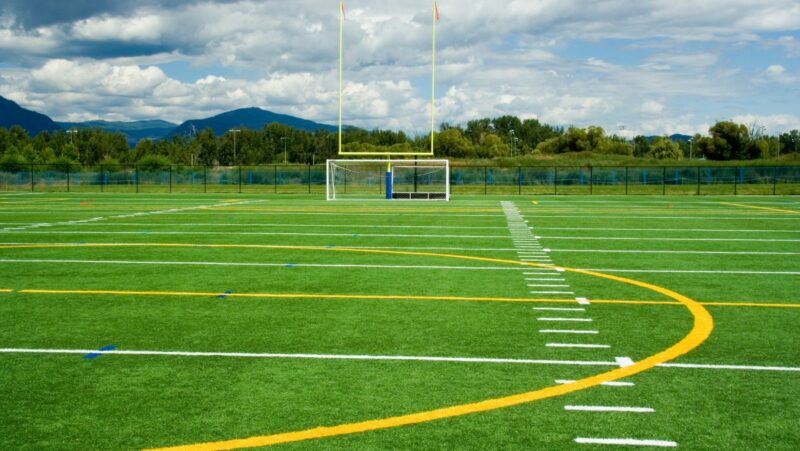
Are you struggling to navigate the complex world of utility coordination? Don’t worry, you’re not alone. In this article, we will explore the importance of stakeholder collaboration in ensuring smooth utility coordination processes. We’ll discuss the challenges you may face and provide best practices for effective communication. By leveraging technology and proactive planning, you can streamline coordination efforts and achieve successful outcomes. Get ready to discover the benefits of working together and learn from real-life examples of successful stakeholder collaboration in utility coordination.
The Importance of Stakeholder Collaboration in Utility Coordination
Why is stakeholder collaboration important in utility coordination? When it comes to utility coordination, working together with stakeholders is crucial for ensuring a smooth and efficient process. By collaborating with all parties involved, you can minimize delays, reduce costs, and improve overall project outcomes.
One of the main reasons why stakeholder collaboration is important in utility coordination is because it allows for better communication and coordination between different entities. Utilities, contractors, government agencies, and other stakeholders all have their own roles and responsibilities in the coordination process. By collaborating and sharing information, you can avoid conflicts and ensure that everyone understands their role and how it fits into the larger project.
Another reason why stakeholder collaboration is important is because it helps identify and address potential issues early on. By involving all stakeholders from the beginning, you can identify any conflicts or challenges that may arise and work together to find solutions. This proactive approach can save time, money, and resources in the long run.
Additionally, stakeholder collaboration promotes transparency and accountability. When all parties are involved in the coordination process, there is a shared understanding of the project goals and objectives. This fosters trust and accountability among stakeholders, as everyone is aware of their role in achieving the desired outcomes.
Understanding the Challenges of Utility Coordination
One of the biggest challenges you will face in utility coordination is the limited availability of resources because of which you have to consider utility risk management. This includes not only the physical resources such as equipment and materials but also the human resources needed to effectively coordinate the various stakeholders involved in the process.
In order to successfully navigate these challenges, it is important to understand the specific obstacles that may arise. The table below outlines some of the key challenges in utility coordination and suggests possible strategies to overcome them:
| Challenge | Possible Strategies |
| Limited availability of resources | Prioritize projects based on urgency and impact, collaborate with other stakeholders |
| Conflicting schedules and priorities | Facilitate open communication and negotiation, establish clear timelines and deadlines |
| Lack of coordination between stakeholders | Implement a centralized communication platform, establish regular meetings and updates |
| Incomplete or inaccurate utility data | Invest in comprehensive utility mapping and documentation, perform regular updates |
Practices for Effective Stakeholder Communication
To ensure effective stakeholder communication, it is important for you to consistently communicate with and between all relevant parties involved in utility coordination. One of the best practices for achieving this is to establish clear lines of communication from the beginning of the project. This involves identifying all stakeholders and determining their preferred method of communication, whether it be through email, phone calls, or face-to-face meetings.
Regular and timely communication is crucial throughout the coordination process. It is important to keep all stakeholders informed of any changes or updates that may impact their work. This includes sharing information about project timelines, potential conflicts, and any necessary adjustments to plans.
Another best practice is to actively listen to the concerns and feedback of stakeholders. By creating an open and safe space for dialogue, you can address any issues or conflicts that arise. This also allows for the identification of potential solutions and opportunities for collaboration.
Additionally, using technology and digital tools can greatly enhance stakeholder communication. Online platforms and software can streamline the sharing of information, facilitate real-time updates, and provide a centralized location for stakeholders to access relevant documents and data.
Leveraging Technology for Streamlined Coordination
You can leverage technology to streamline coordination processes and enhance collaboration among stakeholders. By utilizing digital tools and platforms, you can automate and simplify various tasks associated with utility coordination, making the process more efficient and effective.
One way technology can facilitate streamlined coordination is through the use of collaborative project management software. This type of software allows stakeholders to communicate, share documents, and track progress in real-time, eliminating the need for cumbersome email chains and manual updates. With everyone on the same page, projects can move forward smoothly, and delays can be minimized.
Another technology that can be leveraged is Geographic Information System (GIS) mapping. GIS mapping provides a visual representation of project locations, utility infrastructure, and potential conflicts. By having this information readily available, stakeholders can easily identify and resolve coordination issues, reducing the risk of costly delays and accidents.
Furthermore, mobile applications can be used to enhance communication and coordination in the field. These apps enable stakeholders to share information, capture photos, and report issues directly from the site, improving efficiency and ensuring accurate and timely data collection.
Incorporating technology into the coordination process not only streamlines operations but also enhances collaboration among stakeholders. By leveraging digital tools, you can foster a more efficient and effective utility coordination process, leading to successful project outcomes.
The Role of Utility Companies in Collaboration
While utility companies play a crucial role in collaboration, they can actively contribute to the coordination process by providing timely and accurate information about their infrastructure and operations. This is essential for ensuring smooth utility coordination processes. Utility companies have extensive knowledge about their networks, including the location of pipelines, cables, and other infrastructure. By sharing this information with other stakeholders, such as construction companies or local authorities, they can help prevent accidents and minimize disruptions during construction projects. Additionally, utility companies can provide valuable insights into their operations, such as maintenance schedules and outage notifications. This information allows other stakeholders to plan their activities more effectively and avoid unnecessary conflicts or delays. Collaborating with utility companies also enables stakeholders to identify potential conflicts early on and find suitable solutions. For example, if a construction project requires digging near a gas pipeline, the utility company can advise on the necessary precautions to ensure safety. By actively participating in collaboration efforts, utility companies can contribute to the overall success of infrastructure projects and help create a more efficient and reliable utility network.
Building Relationships With Government Agencies for Successful Coordination
But, as a stakeholder involved in utility coordination processes, it is important to build strong relationships with government agencies to ensure successful coordination. Government agencies play a crucial role in utility coordination, as they are responsible for regulating and overseeing various aspects of the process. By building relationships with these agencies, you can establish open lines of communication and foster a sense of collaboration.
One way to build relationships with government agencies is to actively participate in meetings and workshops organized by these agencies. This allows you to engage directly with agency representatives, understand their perspectives and priorities, and demonstrate your commitment to coordination efforts. Additionally, staying informed about relevant policies and regulations can help you align your activities with the agency’s goals and requirements.
Another important aspect of building relationships with government agencies is maintaining regular and transparent communication. This includes providing timely updates on your coordination activities, sharing any challenges or concerns you may have, and seeking their input and feedback. By keeping the lines of communication open, you can establish trust and credibility with the agency, which can lead to smoother coordination processes.
Lastly, it is essential to be proactive in addressing any issues or conflicts that may arise during the coordination process. By taking a collaborative approach and working together with the agency to find solutions, you can demonstrate your commitment to successful coordination and build a stronger relationship.
Strategies for Conflict Resolution in Utility Coordination
One effective strategy for conflict resolution in utility coordination is to establish a neutral third-party mediator. When conflicts arise between stakeholders involved in utility coordination processes, having a mediator can help facilitate productive communication and find common ground. The mediator, being a neutral party, can listen to all sides of the conflict and help the stakeholders reach a mutually agreeable solution.
The role of the mediator is to create a safe and supportive environment where stakeholders can express their concerns and perspectives. They can help identify the underlying issues causing the conflict and guide the stakeholders toward finding a resolution. By actively listening and facilitating open dialogue, the mediator can help build understanding and empathy among the stakeholders.
In addition to establishing a neutral third-party mediator, another strategy for conflict resolution in utility coordination is to encourage collaboration and compromise. This involves encouraging stakeholders to work together to find solutions that meet everyone’s needs. By focusing on common goals and interests rather than individual demands, stakeholders can find ways to address conflicts and reach mutually beneficial agreements.
Ensuring Compliance With Regulatory Requirements
To ensure smooth utility coordination processes, you must actively comply with all regulatory requirements. Regulatory requirements are put in place to ensure the safety and efficiency of utility coordination projects. By adhering to these requirements, you can avoid delays, penalties, and potential legal issues that may arise from non-compliance.
First and foremost, it is crucial to stay informed about the specific regulatory requirements that apply to your utility coordination project. This includes understanding any permits, licenses, or certifications that may be necessary, as well as any specific rules or guidelines that must be followed. Regularly analyzing and familiarizing yourself with these requirements will help you stay on track and ensure compliance throughout the project.
In addition to staying informed, it is important to establish clear processes and procedures to ensure compliance. This may involve creating a checklist or a step-by-step guide to follow when carrying out utility coordination activities. By having a structured approach, you can ensure that all necessary regulatory requirements are met and documented appropriately.
Furthermore, it is essential to maintain accurate and up-to-date records of your compliance efforts. This includes keeping track of permits, licenses, inspections, and any other relevant documentation. Having a well-organized record-keeping system will not only facilitate compliance but also provide evidence of your compliance efforts if ever required.
Lastly, it is advisable to seek professional assistance when needed. Regulatory requirements can be complex and subject to change, so consulting with experts in the field can help ensure that you are up-to-date and fully compliant.
Mitigating Risks and Minimizing Delays in Utility Coordination
To mitigate risks and minimize delays in utility coordination, you should establish proactive communication channels and implement robust contingency plans. By taking these steps, you can ensure that potential issues are identified and addressed promptly, reducing the likelihood of delays and disruptions in the coordination process. Here are three key strategies to consider:
• Regular Communication: Maintain open lines of communication with all stakeholders involved in the utility coordination process. This includes utility companies, contractors, and regulatory agencies. Regular meetings and updates will help to identify and resolve any issues before they escalate, keeping the project on track.
• Early Identification of Risks: Conduct thorough risk assessments and identify potential risks and challenges that may arise during the utility coordination process. By identifying these risks early on, you can develop contingency plans to address them swiftly and minimize any potential delays or disruptions.
• Collaborative Problem Solving: Foster a collaborative environment among all stakeholders involved in the coordination process. Encourage open dialogue and problem-solving discussions to address any challenges that may arise. By working together, you can find innovative solutions and minimize any delays that may occur.
The Benefits of Proactive Planning in Stakeholder Collaboration
Maximize the effectiveness of stakeholder collaboration by proactively planning and coordinating efforts. Proactive planning in stakeholder collaboration offers several benefits that can greatly enhance the success of utility coordination processes. By anticipating potential challenges and addressing them in advance, stakeholders can minimize delays and improve overall efficiency.
One of the key benefits of proactive planning is the ability to identify and resolve conflicts early on. By conducting thorough assessments and analyses of the project, stakeholders can identify potential areas of conflict and develop strategies to address them. This proactive approach allows for early engagement and open communication among stakeholders, leading to quicker resolution of issues and a smoother coordination process.
Proactive planning also allows stakeholders to allocate resources more effectively. By accurately forecasting project requirements and timelines, stakeholders can ensure that the necessary resources are available when needed. This prevents delays and disruptions caused by resource shortages and allows the project to progress smoothly.
Furthermore, proactive planning enables stakeholders to identify opportunities for collaboration and synergy. By involving all relevant parties early in the planning process, stakeholders can identify areas where their efforts can be combined or coordinated to achieve mutually beneficial outcomes. This collective approach fosters cooperation and collaboration, leading to more efficient and successful utility coordination processes.
Successful Examples of Stakeholder Collaboration in Utility Coordination
Collaborating with stakeholders, you can learn from successful examples of utility coordination to enhance your own processes. By examining these examples, you can gain valuable insights into how effective collaboration can lead to smoother and more efficient utility coordination. Here are three successful examples of stakeholder collaboration in utility coordination:
• City of Seattle’s Streetcar Project: The City of Seattle successfully coordinated with various stakeholders, including utility companies, to install a new streetcar line. Through regular communication and collaboration, they were able to minimize disruptions to utility services and ensure a smooth construction process.
• Los Angeles Department of Water and Power: The Los Angeles Department of Water and Power collaborated with other utilities, such as gas and telecommunication companies, during a major infrastructure upgrade. By sharing information and coordinating their activities, they were able to avoid conflicts and complete the project on time.
• Florida Power & Light: Florida Power & Light worked closely with local municipalities and other utilities to restore power quickly after a hurricane. Their collaborative efforts included sharing resources, coordinating repair crews, and prioritizing critical infrastructure, resulting in a faster restoration process.
These examples demonstrate the importance of stakeholder collaboration in utility coordination. By learning from these successful cases, you can implement similar strategies and enhance your own coordination processes.
Evaluating the Success of Stakeholder Collaboration in Utility Coordination Projects
By assessing the outcomes and feedback from stakeholders, you can determine the effectiveness and achievements of collaboration in utility coordination projects. Evaluating the success of stakeholder collaboration is a crucial step in understanding the impact and value of their contributions. One way to evaluate success is by examining the outcomes achieved through collaboration. This can include the completion of the project within the expected timeline, the adherence to budgetary constraints, and the overall quality of the work performed. By comparing these outcomes to the initial goals and objectives of the project, you can gauge the level of success achieved through stakeholder collaboration.
In addition to outcomes, feedback from stakeholders is another important factor in evaluating the success of collaboration. This feedback can come in the form of surveys, interviews, or informal conversations. By gathering feedback from stakeholders, you can gain insights into their perceptions of the collaboration process, their level of satisfaction with the outcomes, and any areas for improvement. This feedback can provide valuable information on the strengths and weaknesses of the collaboration efforts and help identify areas for future improvement.
Ultimately, evaluating the success of stakeholder collaboration in utility coordination projects allows project teams to identify what worked well and what can be improved upon in future projects. This assessment helps to ensure continuous improvement and the development of best practices for effective collaboration.
Future Trends and Innovations in Stakeholder Collaboration for Utility Coordination
As you look ahead to the future of stakeholder collaboration for utility coordination, consider the potential for new trends and innovations in streamlining the process. The ever-evolving landscape of technology and communication presents exciting possibilities for improving collaboration among stakeholders involved in utility coordination projects. Here are three key trends and innovations to watch out for:
• Advanced Data Analytics: With the increasing availability of data, stakeholders can leverage advanced analytics tools to gain insights and make informed decisions. Predictive analytics can help identify potential conflicts and optimize coordination efforts, reducing project delays and costs.
• Artificial Intelligence (AI): AI-powered solutions have the potential to revolutionize stakeholder collaboration in utility coordination. Machine learning algorithms can analyze vast amounts of data, automate routine tasks, and provide real-time updates. AI can enhance communication and coordination between stakeholders, ensuring smooth and efficient project execution.

• Virtual and Augmented Reality (VR/AR): VR and AR technologies can transform the way stakeholders collaborate and visualize utility coordination. By creating virtual environments, stakeholders can simulate different scenarios, identify potential clashes, and make informed decisions. VR/AR can enhance stakeholder communication, improve coordination, and mitigate risks.
These trends and innovations hold immense potential to streamline stakeholder collaboration in utility coordination. As technology continues to advance, embracing these innovations will pave the way for more efficient and successful utility coordination projects.
Frequently Asked Questions
How Can Stakeholder Collaboration Improve Utility Coordination Processes?
Collaboration between stakeholders enhances utility coordination processes. By working together, you can streamline communication, prevent delays, and resolve conflicts efficiently. This ensures a smooth and effective coordination of utilities for all parties involved.
What Are Some Common Challenges Faced in Utility Coordination and How Can They Be Addressed?
Some common challenges in utility coordination include communication breakdowns and conflicting schedules. You can address these challenges by establishing clear lines of communication and implementing a collaborative scheduling system.
What Are Some Effective Strategies for Communication With Stakeholders in Utility Coordination Projects?
Effective strategies for communication with stakeholders in utility coordination projects include regular meetings, open and transparent communication, active listening, and addressing concerns promptly. Building strong relationships and fostering collaboration are key to ensuring smooth coordination processes.
How Can Technology Be Leveraged to Streamline Coordination Efforts Among Stakeholders?
To streamline coordination efforts among stakeholders, you can leverage technology. It helps in efficient communication, real-time updates, and collaboration. With tools like project management software and digital platforms, you can ensure smooth utility coordination processes.
What Is the Role of Utility Companies in Stakeholder Collaboration and How Can They Contribute to Successful Coordination Projects?
Utility companies play a crucial role in stakeholder collaboration and contribute to successful coordination projects. They can utilize technology to streamline efforts, communicate effectively, and ensure smooth utility coordination, enhancing overall project efficiency and effectiveness.
Conclusion
In conclusion, stakeholder collaboration is crucial for ensuring smooth utility coordination processes. By understanding the challenges, implementing effective communication practices, leveraging technology, and involving utility companies, projects can be successfully executed. Proactive planning and evaluation of collaboration efforts are key to achieving desired outcomes. As future trends and innovations continue to emerge, stakeholders must adapt and embrace new methods to further enhance coordination in utility projects.













